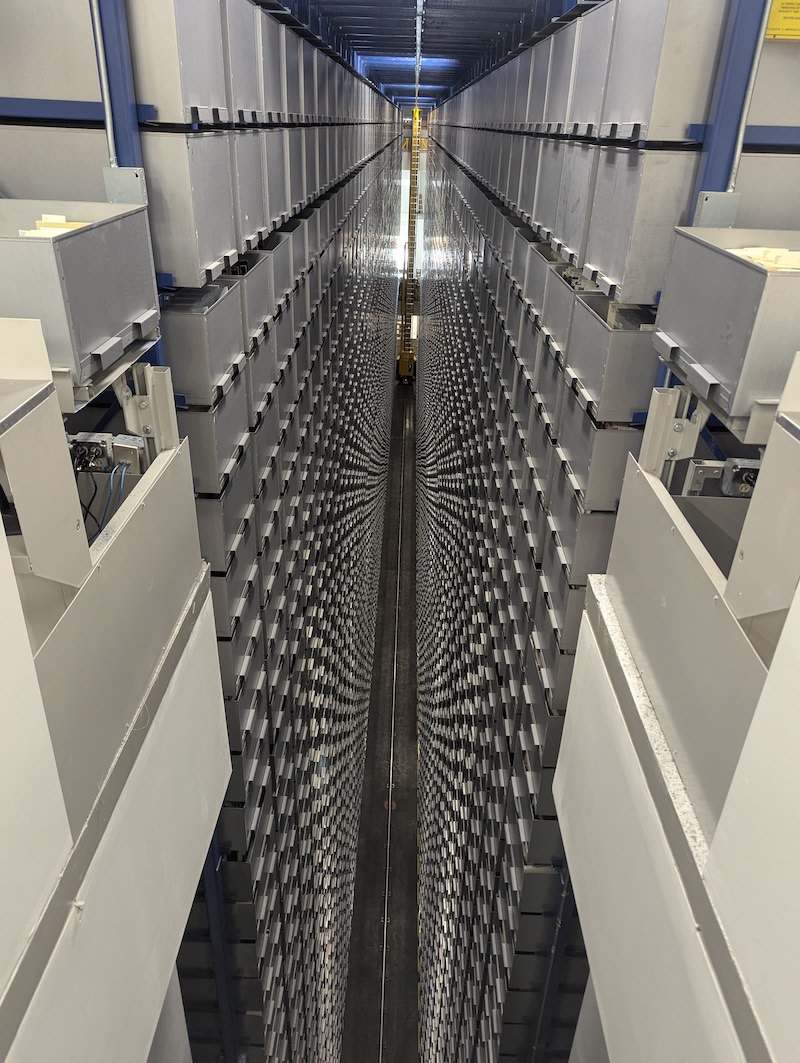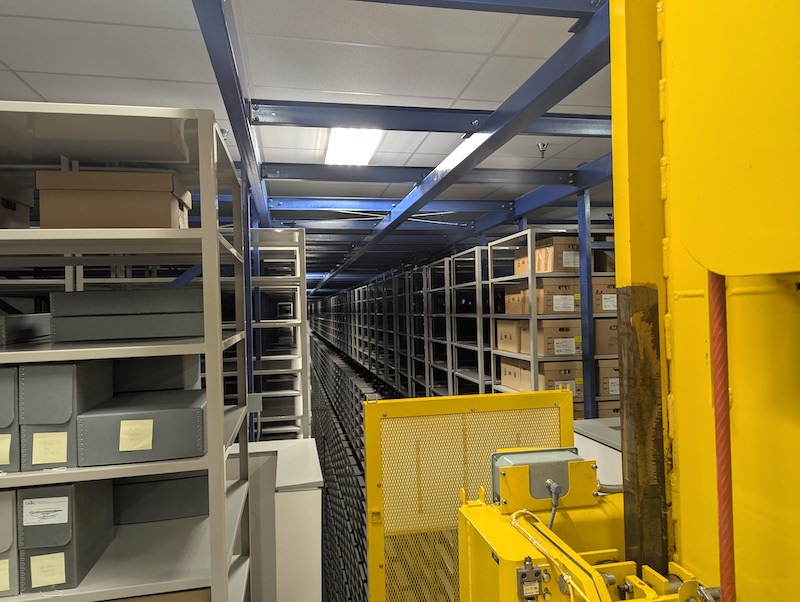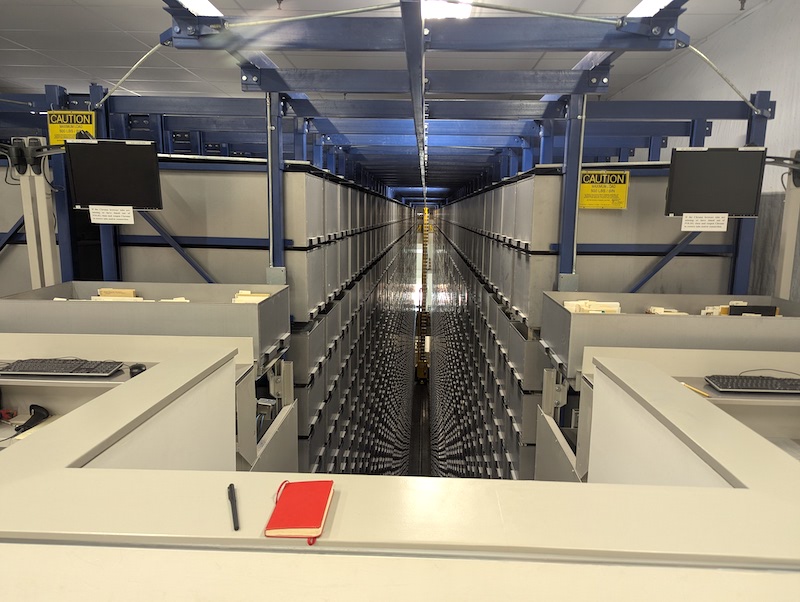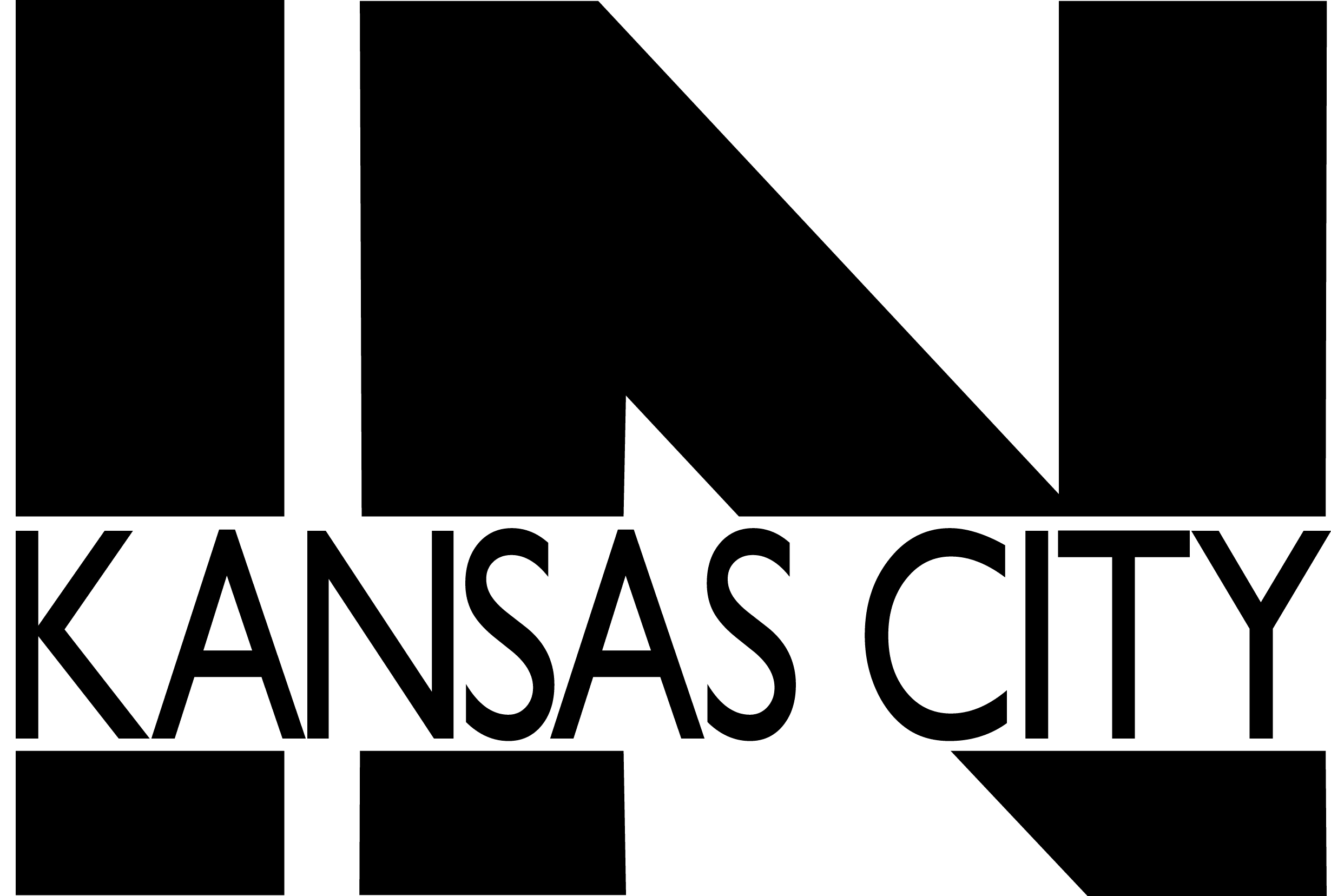
There’s an automated storage and retrieval system inside Miller Nichols Library at the University of Missouri-Kansas City.
Ahem. There’s a three-story robot inside Miller Nichols Library at UMKC. Three cranes make up The Robot, which retrieves bins of books and history by the shelf load from towering steel structures drilled into the Missouri bedrock. It works in relative darkness with no human operation.
The Robot was built in 2010. UMKC estimates that it occupies less than 15 percent of the space open shelves would, and it retrieves obscure items in minutes. It contains 80 percent of the library’s books, plus historical documents from the university, the State Historical Society of Missouri, the Starr Women’s Hall of Fame, the archive of journalist Edgar Snow, and—you won’t be surprised when you see it—more.

Who Feeds The Robot?
The Robot’s collection is massive and growing all the time. A freak for efficiency, it stores millions of documents on shelves that still have caverns of empty space.
In February, the UMKC Starr Women’s Hall of Fame inducted seven new members—all local women who influenced the Kansas City area and beyond. Among them: Muriel Kauffman, the late civic leader and philanthropist; Eliza Burton Conley Jr., the first Native American woman to earn a law degree and to argue before the U.S. Supreme Court; and the Olympic and University of Kansas women’s basketball coach Marian E. Washington.
Soon, the inductees or their surviving families will tour the archives. If they choose, they’ll donate their letters, journals, photographs, and other documents.
Amy Samaripa, UMKC’s director of external relations, works closely with the Starr Women’s Hall of Fame. She says the hall’s archive sets it apart from others like it.
“We’re able to archive the stories—from the paperwork to the medals to the newspaper articles, whatever gets donated by the inductees—all in one place so that researchers can access it through the internet or in person,” she says.

If you search the library’s catalog and something’s not in the open stacks—which is likely if it’s a historical document—it’s probably hanging out with The Robot, who knows right where to find it.
Stuart Hinds, UMKC’s curator of Special Collections & Archives, leads the team that collects, catalogs, and organizes materials for the Starr archive, the university, ethnic groups in Kansas City, and more.
“Probably to the chagrin of my colleagues, I tend to err on the side of keeping too much because it’s very difficult to predict what’s going to be of interest to a scholar in the future,” says Hinds. “I would rather err on the side of having too much, so they can have the opportunity to discover more than less, right?”
Hinds is concerned with efficiency, too. He only keeps two copies of any document, and financial records are often duds for researchers, so those can go.
“But in the case of an individual in particular, I try to put myself in the place of a biographer, and I would just presume that a biographer would want to know as much as they possibly can about their subject,” says Hinds. “And so it’s incumbent upon us, if we have the space and the capacity, to save as much as we can about that individual.”
“Ninety-nine times out of 100, the materials come to us in an unorganized fashion, so we spend our time organizing material in a way that makes sense both for the collection and for users of the collection.”
The Robot is impressive, but without human sweat, discernment, and open-ended foresight, it’s just a forklift.

Serving Researchers, Saving the Truth
If you get a chance, ask Samaripa or Hinds about the interesting ways people have used UMKC’s archives and special collections.
Samaripa remembers a woman researching handwriting. To heck with a biography—she used the Starr Women’s Hall of Fame archives to research handwriting from the 1800s to the present day. Hinds speaks of students engaging firsthand with the work of anthropologists, trailblazers in healthcare, civil rights leaders.
Samaripa recalls someone researching a possible relative of a Starr Women’s Hall of Famer. “She wanted to access her nomination form and some of the papers to verify, I think, that they were relatives.”
The archive is a network of information that installs hooks onto the receding past and allows us to discover—and save—the truth in periods of historical erasure.
“This is how you prevent that from happening. This is how you guarantee that those attempts at erasure aren’t successful,” says Hinds. “And that’s why our work is as critical now as it ever has been before.”


